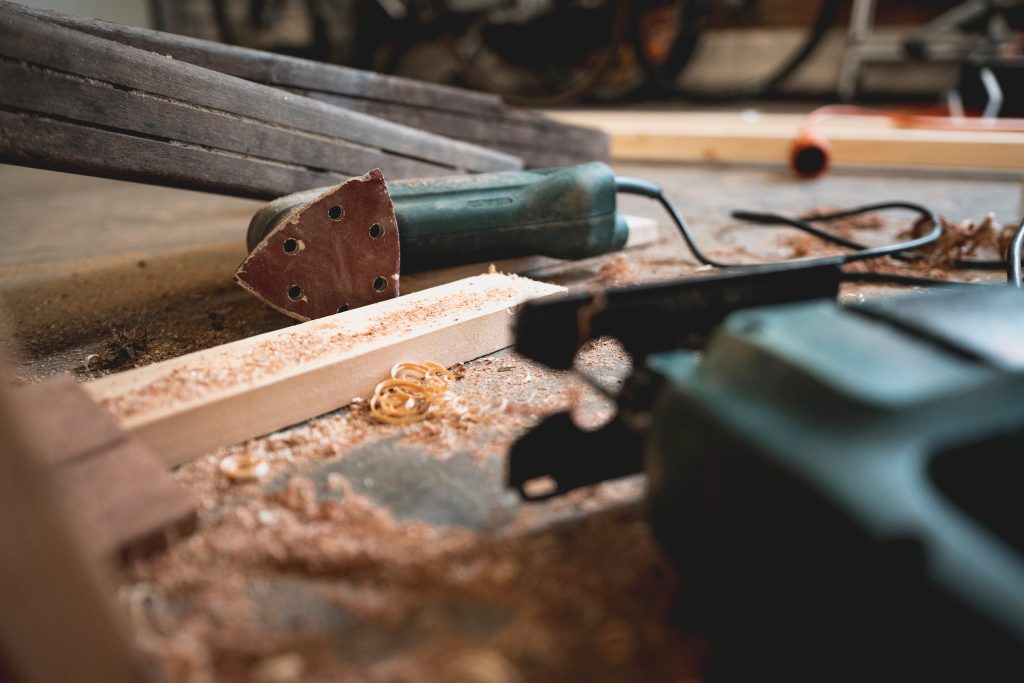Are you tired of your guitar sounding more like a rusty tin can than a rock god’s weapon of choice? Have you ever spent more time tuning and fixing your instrument than actually playing it? Well fear not, fellow ax-wielders, because in this ultimate guitar maintenance handbook, we’ll teach you the tricks of the trade to keep your beloved six-string in prime condition. So strap in, grab your trusty pliers and a can of WD-40, and get ready to rock and roll (not rust and rattle)!
Contents
- 1 Understanding the Importance of Routine Guitar Maintenance
- 2 Choosing the Right Tools for Your Guitar Care Kit
- 3
- 4 Mastering the Art of String Replacement and Tuning Stability
- 5 Adjusting the Truss Rod: Ensuring Optimal Neck Health
- 6 Navigating Fretboard Maintenance for Optimal Playability
- 7 The Significance of Humidity and Temperature in Guitar Storage
- 8 FAQs
- 9 Rock On With a Well-Maintained Guitar!
Understanding the Importance of Routine Guitar Maintenance
So, you’ve finally picked up that dusty old guitar in the corner and decided to learn how to play. Congratulations! But before you start rocking out like a pro, it’s important to understand the importance of routine guitar maintenance. Trust me, you don’t want to be the person with the squeaky, out-of-tune guitar at the campfire jam session.
First off, keeping your guitar clean is crucial. Dust and grime can build up on your strings and fretboard, affecting the sound and playability of your instrument. Grab a soft cloth and some guitar polish, and give your baby a good wipe down. Your guitar will thank you by sounding sweeter than ever.
Next, don’t forget to tune your guitar regularly. A well-tuned guitar is like a finely-tuned sports car – it just performs better. Invest in a good tuner and get in the habit of checking your tuning before each practice session. Your ears will thank you when you’re not cringing at the dissonant chords coming from your out-of-tune axe.
Finally, don’t ignore the little things like checking for loose knobs, screws, and bridge pins. You don’t want your tuning peg to fall off mid-song, do you? And remember, a little bit of maintenance goes a long way in keeping your guitar in top shape for years to come. So, show your guitar some love and give it the TLC it deserves!
Choosing the Right Tools for Your Guitar Care Kit
Once you’ve decided to invest in a guitar care kit, the next step is choosing the right tools to include. Here are some essential items to consider:
- Polishing Cloth: Keep your guitar looking shiny and new with a soft microfiber cloth. No one wants a dull-looking axe!
- Fretboard Cleaner: A clean fretboard is crucial for smooth playing. Make sure to choose a cleaner specifically designed for your type of fretboard.
- String Winder: Save your fingers from the agony of winding strings by hand. Plus, it’s a great arm workout!
- String Cutter: When it’s time to change your strings, make sure you have a reliable string cutter on hand to make quick work of snipping those old strings.
Don’t forget to consider the type of guitar you have when selecting tools for your kit. Acoustic guitars may require different care than electric guitars, so be sure to choose tools that are suitable for your specific instrument. Remember, a well-maintained guitar is a happy guitar!

cleaning-your-guitar”>Techniques for Properly Cleaning Your Guitar
First things first, make sure to gather all the necessary tools for cleaning your guitar. You’ll need a soft cloth, guitar polish, and some elbow grease – because let’s face it, cleaning a guitar is no easy feat!
Next, start by gently wiping down your guitar with the soft cloth to remove any dust and debris. Be sure to pay special attention to the fretboard, as this area can accumulate a lot of grime over time. If the fretboard is particularly dirty, consider using a damp cloth with a small amount of guitar polish to clean it thoroughly.
Once you’ve wiped down the body and fretboard of your guitar, it’s time to give it a good polish. Apply a small amount of guitar polish to another clean cloth and buff the body of your guitar until it shines like the sun. Remember, a shiny guitar is a happy guitar!
Finally, don’t forget to clean your guitar’s strings. You can use a string cleaner or simply wipe them down with a cloth after playing. This will not only keep your strings in good condition but will also help prolong the life of your guitar. Now sit back, admire your sparkling guitar, and get ready to rock out like never before!

Mastering the Art of String Replacement and Tuning Stability
So, you’ve finally decided to tackle the task of string replacement and tuning stability. Congratulations! You’re about to embark on a journey that will test your patience, your dexterity, and probably your sanity.
First things first, make sure you have all the necessary tools at your disposal. A good set of strings, a tuner, a string winder, and a lot of patience are essential. You may also want to grab a cold beverage and some snacks – you’re going to need them.
When it comes to replacing strings, remember these key tips:
- Stretch those strings before tuning to avoid constant retuning.
- Make sure to cut off any excess string length to prevent unnecessary vibration and buzzing.
- Double-check your tuning as you go – you don’t want to end up with a guitar that sounds like a tortured cat.
Now, onto tuning stability. This is where the real fun begins. Remember, the key is consistency. Keep tuning your guitar regularly, and don’t be afraid to make small adjustments as needed. And if all else fails, just blame it on the weather - guitars are notorious for being moody little divas.

Adjusting the Truss Rod: Ensuring Optimal Neck Health
So, you’ve decided to take matters into your own hands and adjust the truss rod on your beloved guitar. Good for you! But before you embark on this perilous journey, let’s go over a few key points to ensure that your neck stays happy and healthy.
First and foremost, make sure you have the proper tools on hand. You’ll need a trusty screwdriver (Phillips, flathead, whatever floats your boat), a capo, and a tuner. Oh, and don’t forget a little bit of patience – this process can be a bit finicky, but you’ve got this!
Next, it’s time to get down to business. Loosen the strings on your guitar by placing the capo on the first fret and turning the tuning pegs until the strings are nice and slack. This will make adjusting the truss rod much easier and prevent any undue stress on your neck.
Now, grab that trusty screwdriver and locate the truss rod adjustment nut. It’s usually located at the base of the neck, near the body of the guitar. Slowly turn the nut in the direction that will straighten out the neck, but be gentle – you don’t want to overdo it and risk damaging your precious instrument. And voila! Your neck should now be in tip-top shape and ready to rock on for many more jam sessions to come. Happy adjusting!
So, you wanna be a fretboard maintenance guru, huh? Well, strap in and get ready for a wild ride through the world of stringed instrument care! Here are a few essential tips and tricks to keep your fretboard in tip-top shape for maximum playability.
First things first, let’s talk about cleaning. A clean fretboard is a happy fretboard, and a happy fretboard means happy playing! Grab yourself a quality fretboard cleaner and give your frets a good scrub every once in a while. You’ll be amazed at how much grime can build up over time. And hey, while you’re at it, why not treat yourself to a little fretboard oil massage? Your fretboard will thank you by playing like a dream.
Next up, let’s chat about humidity. Believe it or not, your fretboard is a delicate little flower that thrives in a specific environment. Too much humidity and your frets might start to warp, too little and they might start to crack. Keep your fretboard happy by storing your instrument in a case with a humidifier or dehumidifier, depending on your climate. Your fretboard will be singing your praises in no time!
And last but certainly not least, let’s talk about fret wear. Those little guys can take a beating, so it’s important to keep an eye on them for any signs of wear and tear. If you notice any divots or grooves in your frets, it might be time for a little TLC from a professional. Don’t worry, your fretboard will be back to its smooth, shiny self in no time!
The Significance of Humidity and Temperature in Guitar Storage
Have you ever wondered why your guitar sounds a little off sometimes? It might just be a case of bad humidity and temperature control in your guitar storage! But fear not, with a little bit of knowledge and care, you can ensure that your guitar stays in tip-top shape.
Humidity plays a huge role in the health of your guitar. Too much moisture can cause the wood to swell and warp, while too little can cause it to dry out and crack. It’s like Goldilocks and the Three Bears – your guitar wants the humidity levels to be just right!
And let’s not forget about temperature – extremes in heat or cold can wreak havoc on your guitar. Just imagine if your guitar had a voice, it would be screaming “I’m melting!” or “I’m freezing!” in dramatic fashion.
So, next time you’re storing your guitar, remember the importance of humidity and temperature control. Your guitar will thank you with beautiful, in-tune melodies for years to come!
FAQs
Why is guitar maintenance important?
Guitar maintenance is essential because just like a plant, your guitar needs love and care to grow up big and strong. Neglecting maintenance can lead to poor sound quality, broken strings, and a very grumpy guitar that refuses to play for you.
What are some common maintenance tasks for guitars?
Common maintenance tasks for guitars include changing strings regularly, cleaning and conditioning the fretboard, adjusting the truss rod for proper neck relief, and keeping the instrument properly humidified. Think of it as giving your guitar a spa day!
How often should I clean my guitar?
You should make sure to clean your guitar regularly, especially if you’ve been shredding on it like a rockstar. A good rule of thumb is to clean it whenever it starts to look or feel dirty, or every time you hear a weird gunk noise when you play.
What tools do I need for guitar maintenance?
To keep your guitar in prime condition, you’ll need tools like a string winder, a set of allen keys for truss rod adjustments, a microfiber cloth for cleaning, and some guitar polish for keeping your baby shiny and new. Don’t forget to give those strings some shiny bling!
Any tips for storing my guitar properly?
When storing your guitar, be sure to keep it in a case or stand to protect it from dust, humidity, and random bumps. Just like a delicate flower, your guitar needs a cozy little spot to rest and recharge for its next jam session.
Rock On With a Well-Maintained Guitar!
Now that you’ve armed yourself with the ultimate guitar maintenance knowledge, go forth and keep your beloved instrument in top-notch condition. Remember, a well-maintained guitar not only sounds better but also helps you rock out like a true pro. So, grab your toolkit, get your hands dirty, and show your guitar some love! Rock on!



